A healthy spine is a guarantee of stability for the entire body, so it is important not only to strengthen the core muscles but also not to harm the back. One of the most susceptible parts of the spine to injury and disease is the lumbar spine. That’s why we’ll look at abdominal exercises without putting stress on the lower back and find out which options are best avoided to keep your spine healthy.
What exercises should be excluded and in what cases?
To train without harm to the body as a whole, you need to approach the loads gradually, that is, increase the load slowly and first strengthen the ligaments, and then load the muscles harder, if necessary. Any exercise can be dangerous if an unprepared person performs it incorrectly and thoughtlessly. Therefore, it is always important to go from simple to complex. It is a simple and safe exercise that we will consider.
If we talk about dangerous techniques that are best avoided to preserve the integrity of the spine, then It is best to avoid exercises with additional weights, these include:
All these exercises are prohibited even if you have spinal diseases or back pain. Hernias, protrusions, displacements, and pinching may worsen when following the above list.
But, if the back is healthy and the athlete has strengthened the core muscles with simple and preparatory exercises, over time, exercises from this list can be introduced into the program. But provided that the load increases gradually, and the technique is correct.
Abdominal exercises without putting stress on the spine
1. Straight crunches
The simplest version of twisting, in which you don’t even need to lift your lower back off the floor, which makes the exercise especially safe for this area of the spine. The load for the rectus muscle, especially its upper part, will be quite enough, the main thing is to achieve burning and muscle fatigue at the end of the approach.
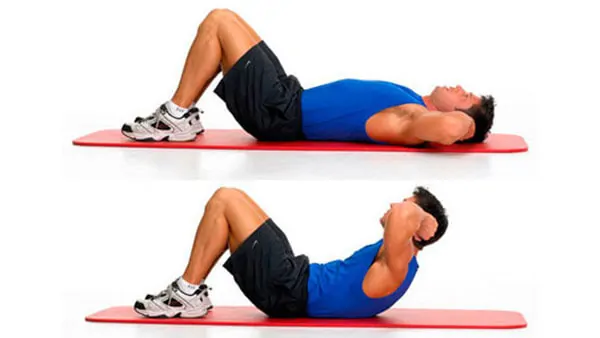
2. Reverse crunches on the floor
This version of twisting is performed in the opposite direction – the pelvis is twisted by shifting the load to the lower part of the rectus ab muscle. Despite the simplicity of the technique, performed with bent knees and a small amplitude, jerking and sudden falls to the floor can also injure the lower back.
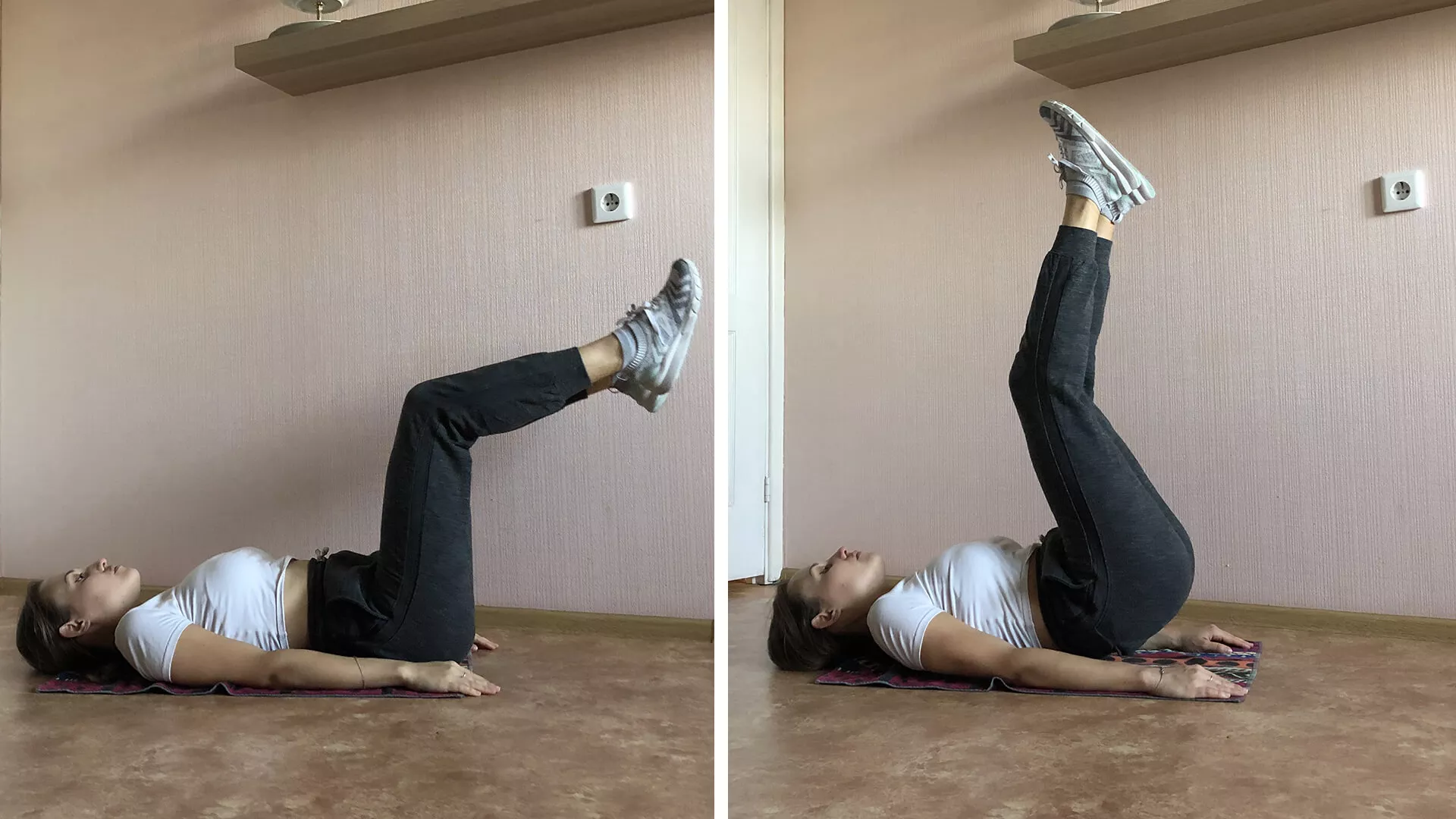
3. Lifting legs while lying alternately
To minimize the load on the lumbar region, leg lifting should be alternated. This is the safest version of the exercise, focusing on the lower part of the rectus ab muscle. But when performing the technique, it is also important to ensure that the lower back does not lift off the floor. Try to raise your knees straight; if there is discomfort in the back of your thighs, you can bend your knees slightly.
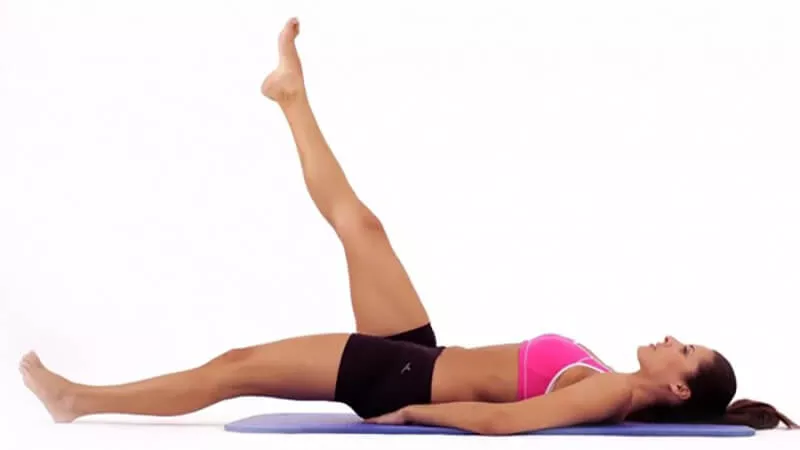
4. Oblique crunches
This option perfectly loads the oblique abdominal muscles without lifting the lower back from the floor. Twisting is performed diagonally using the thoracic spine – the elbow is pulled towards the opposite knee. First, a certain number of exercises are performed in one direction, and then in the other.
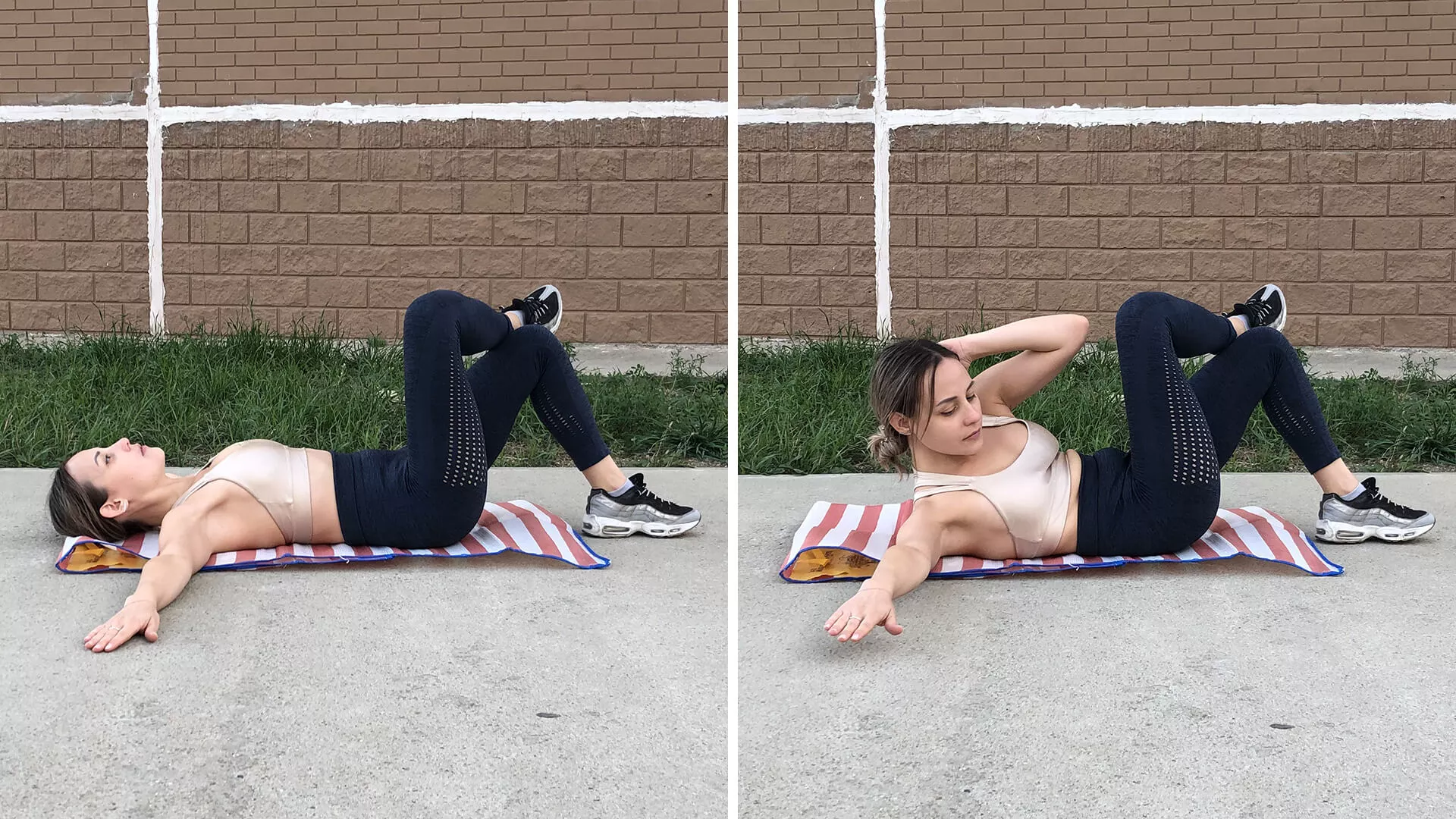
5. Side-lying leg raises
This exercise is performed by lifting both legs at the same time while lying on your side. When performing the technique, it is important to stabilize the position of the body, trying not to sway to the sides; for this, the hips, buttocks, and rectus ab must be tense. First, leg lifts are performed while lying on one side with a small amplitude, and then on the other.
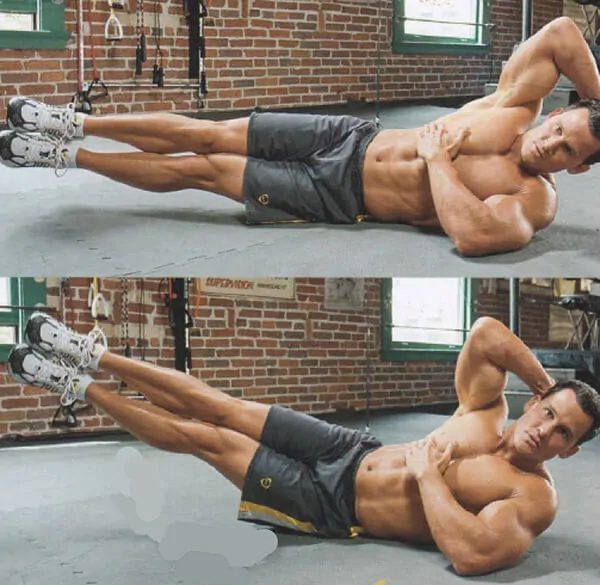
6. Full slow crunches
In the Pilates system, this exercise is also called “roll-up, roll-down.” This technique allows you to load the deep transverse ab muscle, which is responsible for stabilizing the lumbar region and also makes the stomach flatter and pull into the abdominal cavity. Lying on your back, it is important to lift off the floor slowly, vertebra by vertebra, until the spine is completely straight, and reverse twisting to the floor is performed in the same way.
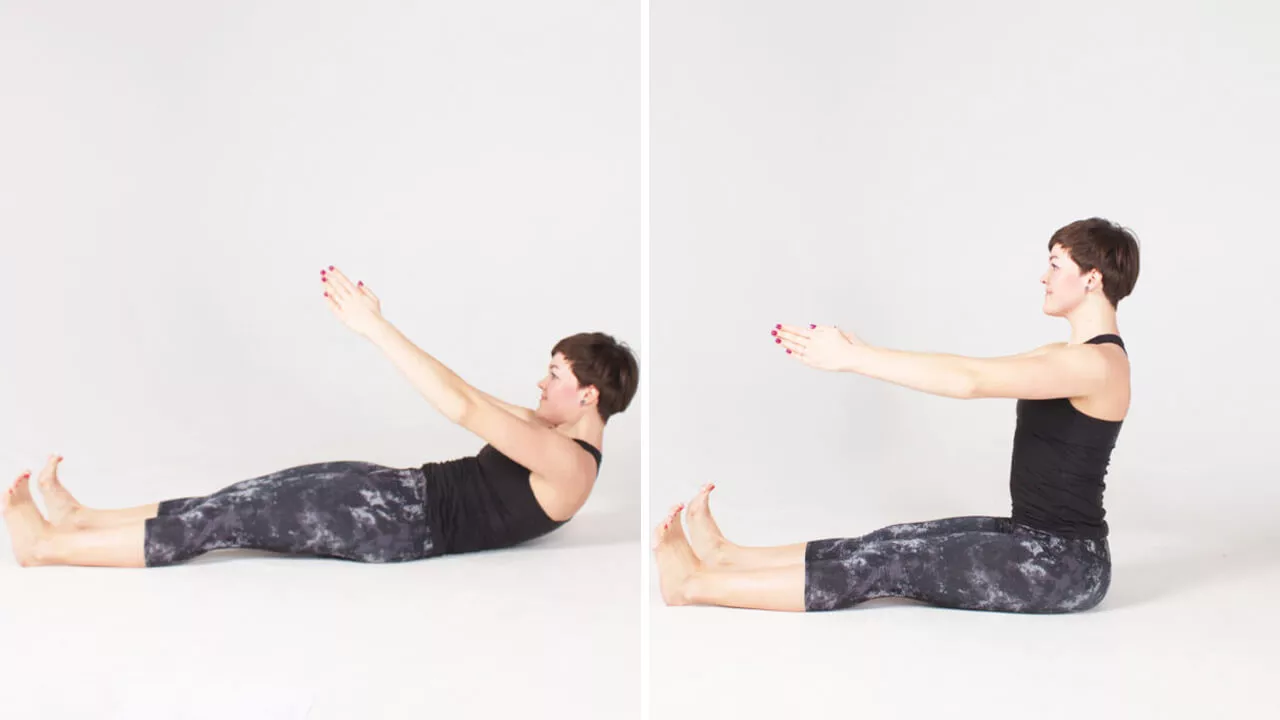
7. Criss-cross
We continue a series of safe exercises borrowed from the Pilates system. In this technique, the lower back does not lift off the floor, but the rectus and oblique abdominal muscles are maximally worked out. When performing “crosswise” twists, the shins remain suspended, and the torso twists diagonally only in the thoracic spine area. Thus, the elbow reaches toward the opposite knee. Twisting is performed alternately on each side.
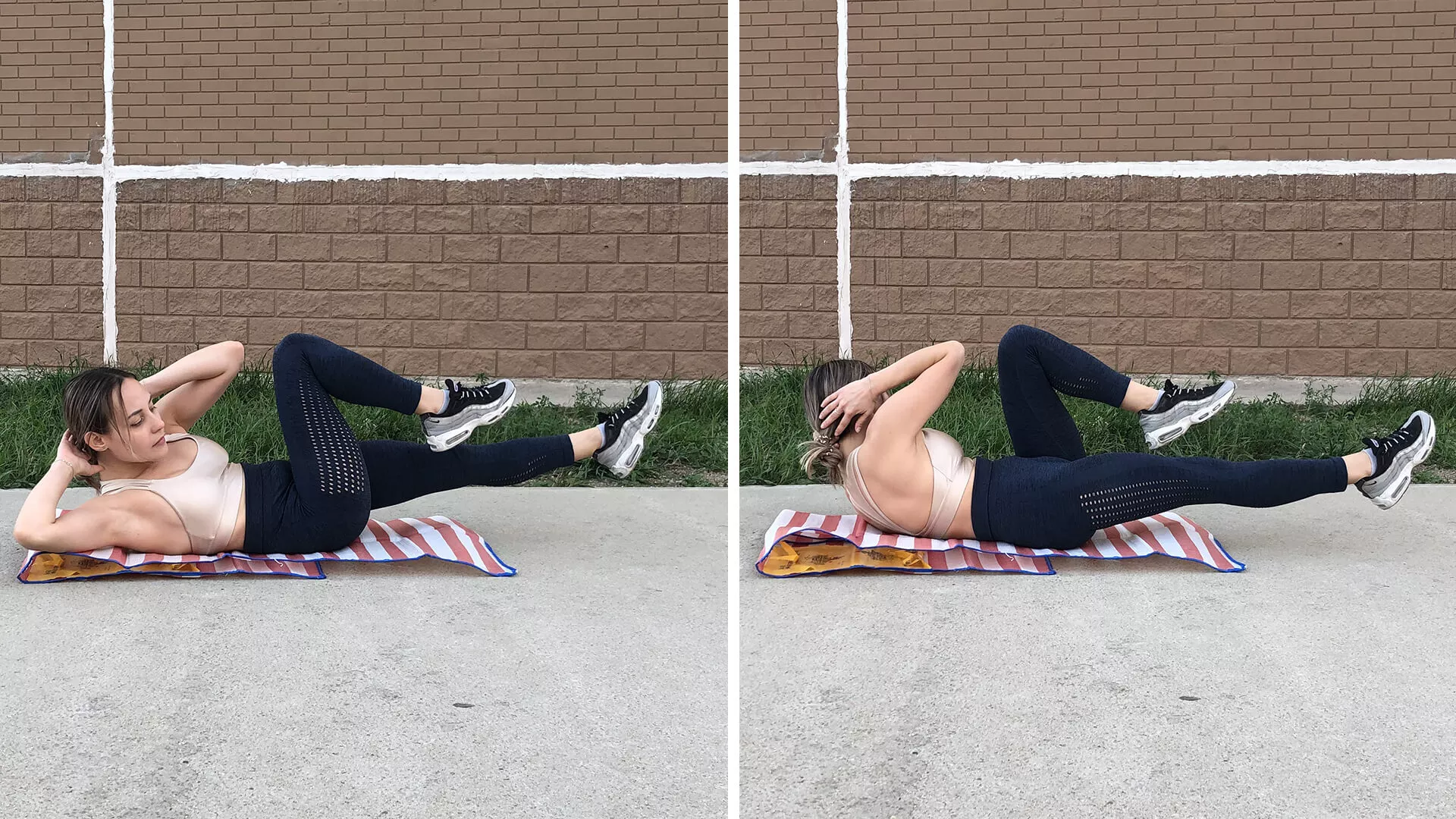
8. Side bends while lying on your back
Another lower back-safe exercise aimed at working the deep and external abdominal muscles, including the oblique muscles. When performing the technique, it is important not to lower the thoracic region to the floor until the end of the approach, while performing alternate bends from side to side, touching the same shin with your palms. Remember to exhale when bending to the side and do not hold your breath.
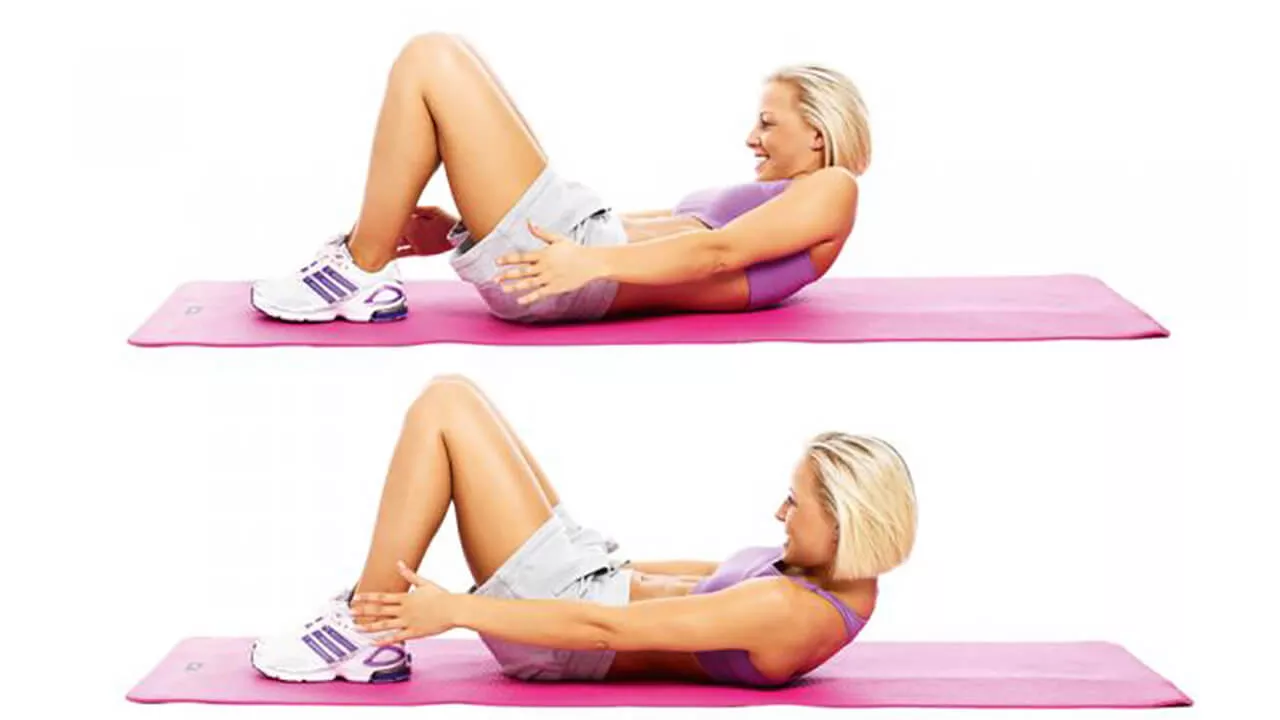
9. Hundred
One of the most popular exercises of the above-mentioned technique, which not only strengthens the abdominal muscles but also, thanks to a special breathing technique, improves fat burning. “Hundred” means performing one hundred repetitions, but this is not necessary for beginners and those who do not have enough muscle endurance to sustain it to the end. The shoulder blades are torn off the floor and held in this position throughout the approach, the lower back is pressed to the floor, the arms are horizontally extended forward above the floor, and the legs are hanging – this is the starting position. Breathing: 4 short pre-inhalations and 4 pre-exhalations; for each inhalation and exhalation, a movement of the hands is performed, reminiscent of clapping on water.
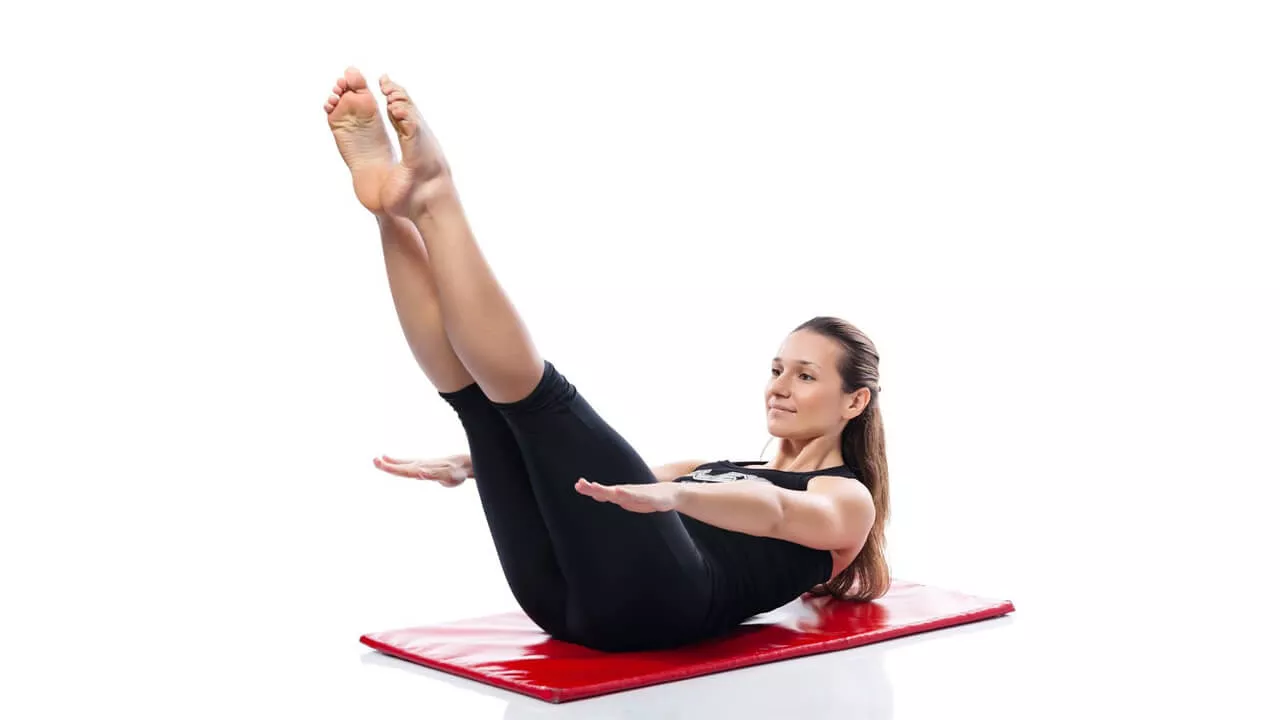
10. Pulling up the knees alternately on the back
We finish the list with an effective exercise that allows you to focus the load on the upper part of the rectus ab muscle. As in the previous exercise, the shoulder blades should not touch the floor, and the lower back should be pressed tightly to the floor. Alternate bending of the knees is performed, touching the shins with the palms. The heels should also not fall to the floor.

How to do the exercises correctly
- It is important to perform even the simplest and safest exercises with the correct technique, otherwise the risk of spinal injury increases.
- The number of exercises is selected individually, usually 15-30 repetitions of 3 sets.
- By the end of the approach, it is important to feel a burning sensation in the muscles.
It is not necessary to perform all the exercises at once; 2-3 options for the rectus and oblique abdominal muscles, as well as for the transverse – deep abdominal muscle, are enough.

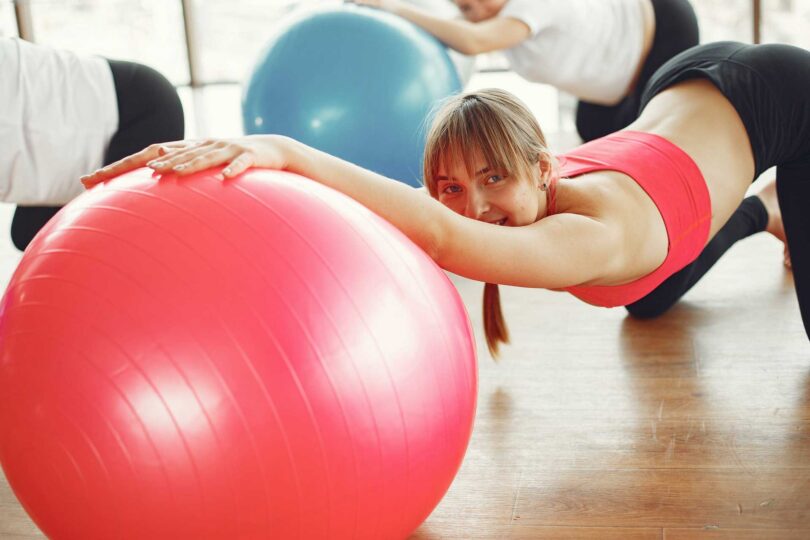
Leave a Comment